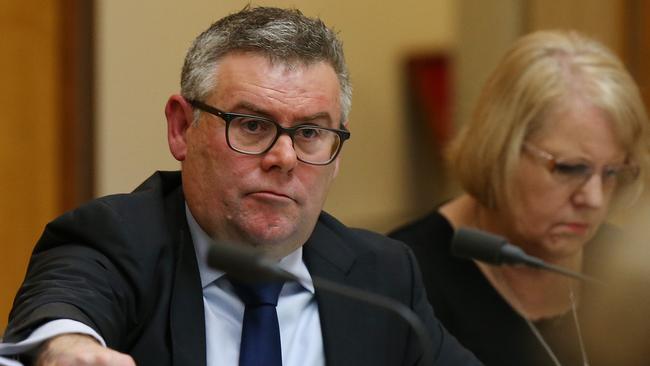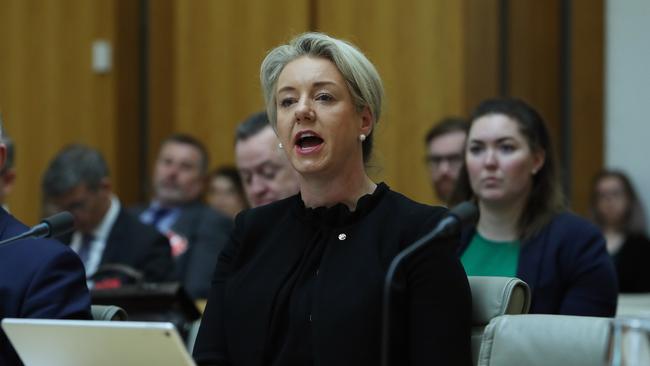NSW drought: Scott Morrison’s $7 billion relief package not all it seems
Immediate drought assistance for farmers makes up less than 14 per cent of the Morrison government’s $7 billion spend as a peak agricultural group demands more direct cash for struggling rural families.
NSW
Don't miss out on the headlines from NSW. Followed categories will be added to My News.
- Farmers worry they’re taking a back seat to the surplus
- Murray Darling Basin Authority apologises after farmers named and shamed
Immediate drought assistance for farmers makes up less than 14 per cent of the Morrison government’s $7 billion spend as a peak agricultural group demands more direct cash for struggling rural families.
The combination of future funds and loans bolstering the figures behind the federal government’s signature drought package was scrutinised in senate estimates, where Agriculture Minister Bridget McKenzie faced a grilling over the lack of direct spending on farm families and bush towns.

Labor Senator Murray Watt repeatedly asked Ms McKenzie how the government could claim to be spending $7 billion, when $5 billion was allocated to a Future Drought Fund, from which only $100 million would be spent annually from July 2020.
“Minister we’ve got the prime minister out there talking about a $7 billion drought package … so that’s overstating things by over nearly $4 billion and another one billion of this fund is loans,” Mr Watt said.
In one fiery exchange Mr Watt told Ms McKenzie she was only deputy leader of The Nationals “for now,” referring to party room rumblings a spill would be called to oust her from the position.

It comes as the National Farmers Federation today unveils its drought policy set out as a blueprint for helping the bush through future natural disasters with measures including a national farm debt mediation scheme, and examining the viability of farm income protection insurance.
The NFF has also written to Prime Minister Scott Morrison and Drought Minister David Littleproud outlining a further six recommendations to deal with the current drought, including a top up payment of at least $2000 per child to the Assistance for Isolated Children allowance and providing “exit packages” for farming families looking to leave the industry.
The organisation has also asked the Commonwealth to give farmers the option of deferring local government and pasture lease rates without interest by covering the shortfall in revenue to councils.
Other requests include a two-year interest free period for Regional Investment Corporation drought loans, more help with eradicating feral pigs and subsidising payroll expense for farming businesses.
“Although self-reliance is the agricultural industry’s preferred approach to drought management, prolonged or severe drought can be beyond the ability of otherwise successful farming businesses to manage,” the policy reads.
“In these instances, considered and well targeted government support is vital.”
Mr Morrison defended the government’s drought spend during question time, highlighting the recent extension of the Farm Household Allowance and $1 million direct grants given to local shires.
“We have a response to drought and that comprehensive response, which is not set and forget, we will continue to add to,” he said.
“Longer term, we have been investing in the resilience of Australia to future droughts with our investments in water infrastructure projects.”
